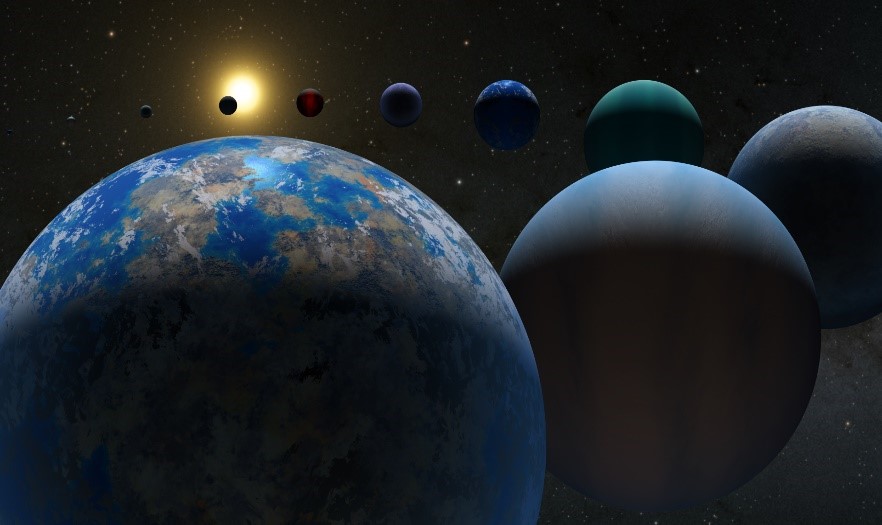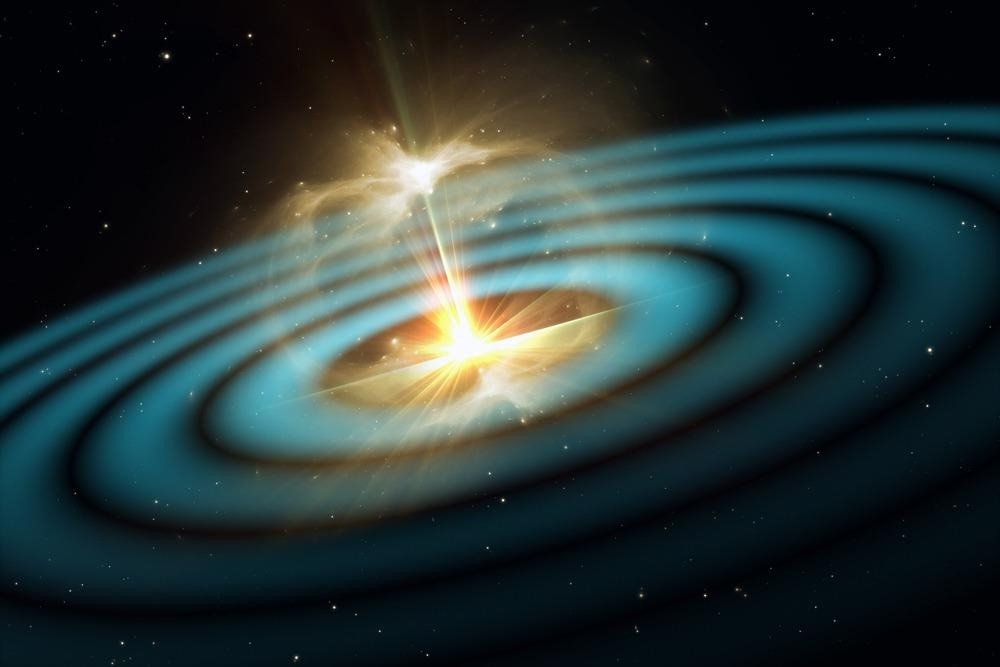Gravitational Waves: Ripples in Spacetime
A gravitational wave is an invisible (yet incredibly fast) ripple in space.We’ve known about gravitational waves for a long time. More than 100 years ago, a great scientist named Albert Einstein came up with many ideas about gravity and space.
Einstein predicted that something special happens when two bodies—such as planets or stars—orbit each other. He believed that this kind of movement could cause ripples in space. These ripples would spread out like the ripples in a pond when a stone is tossed in. Scientists call these ripples of space gravitational waves.

Figure 1. Gravitational Waves: Ripples in Spacetime
Gravitational Waves: Ripples in Spacetime is shown in Figure 1.The most powerful gravitational waves are created when objects move at very high speeds. Some examples of events that could cause a gravitational wave are:
- when a star explodes asymmetrically (called a supernova)
- when two big stars orbit each other
- when two black holes orbit each other and merge
But these types of objects that create gravitational waves are far away. And sometimes, these events only cause small, weak gravitational waves. The waves are then very weak by the time they reach Earth. This makes gravitational waves hard to detect.[1]
Einstein's Prediction: Unveiling the Nature of Gravity
- Introduce the concept of gravitational waves as a consequence of Einstein's theory of general relativity.
- Explain how massive objects in motion generate ripples in the fabric of spacetime.
- Discuss the significance of Einstein's prediction and the decades-long quest to detect these waves.
LIGO and Virgo: The Dawn of Gravitational Wave Astronomy
- Describe the Laser Interferometer Gravitational-Wave Observatory (LIGO) and the Virgo interferometer.
- Explore the technology and methodology behind detecting minuscule changes in spacetime caused by passing gravitational waves.
- Highlight the historic moment of LIGO's first direct detection of gravitational waves in 2015.
Binary Black Hole Mergers: Collisions in the Cosmic Dance
- Explain the phenomenon of binary black hole systems and their eventual merger.
- Explore how LIGO's observations of black hole mergers provide insights into the nature of gravity, black holes, and the universe's expansion rate.
- Discuss the significance of gravitational wave detections in confirming predictions of general relativity..
Neutron Star Collisions: A Multi-Messenger Triumph
- Discuss the collision of neutron stars as a source of gravitational waves and other forms of electromagnetic radiation.
- Explain the historic detection of a neutron star merger and the subsequent observations by both gravitational wave detectors and traditional telescopes.
- Explore the valuable information obtained about the origin of heavy elements and the expansion of the universe.
The Future of Gravitational Wave Astronomy: Cosmic Insights Await
- Highlight the growing network of gravitational wave observatories and collaborations around the world.
- Discuss the potential for observing even more exotic events, such as supernovae, cosmic strings, and primordial black holes.
- Explore the interdisciplinary nature of gravitational wave research and its contributions to our understanding of fundamental physics.
Conclusion: The detection of gravitational waves marks a transformative leap in our ability to observe and study the universe. These ripples in spacetime have unveiled new vistas of knowledge, offering us an entirely fresh perspective on cosmic phenomena. As gravitational wave astronomy continues to evolve and expand, it holds the promise of unlocking further secrets of the cosmos, from the nature of black holes to the very fabric of spacetime itself. Stay tuned for the next installment in our series, where we'll continue our exploration of the exciting frontiers of astronomical discovery.
References:
- https://spaceplace.nasa.gov/gravitational-waves/en/#
Cite this article:
Gokula Nandhini K (2023), The Future of Astronomy: Advancements and Discoveries, AnaTechmaz, pp.4





